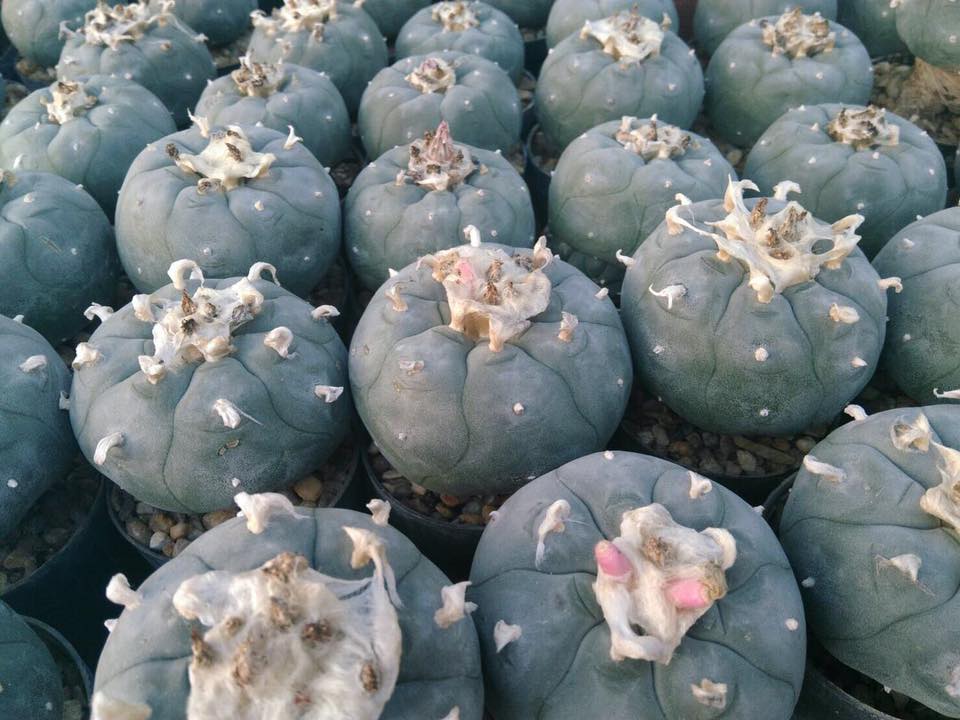1 plant Lophophora williamsii Peyote plants-cactus-cacti-cactaceae
Attribute:
All Lophophora species are extremely slow growing, often taking up to thirty years to reach flowering age in the wild (about the size of a golf ball, not including its root). Human cultivated specimens grow considerably faster, usually taking from six to ten years to go from seedling to mature flowering adult. Origin and Habitat: Grows in an area that stretches from from the Chihuahuan Desert to the South Texas Plains, on either side of the middle and lower Rio Grande River, southward to the Mexican states of Chihuahua, Coahuila, Durango, Nuevo León, San Luis Potosí, Tamaulipas, Zacatecas. Extensive stands of peyote occur on the low, rocky hills in Starr, Zapata, Webb, and Jim Hogg counties of southern Texas. Altitude: It grows from 100 up to 1900 metres above sea level. Habitat and Ecology: This geophytic, button-like cactus occurs in xerophyllous scrub including Tamaulipan thorn scrub isolated or in groups usually in calcareous deserts, on rocky slopes, or in dried river beds. The species is very abundant in habitat with large number of mature individuals however many subpopulations of Lophophora williamsii are heavily harvested in the wild throughout the range of the species, some to the point of extirpation. In Mexico, collection is illegal and people are punished for collecting it. Land use change for agriculture is a significant threat, as the land is completely ploughed, thus eliminating all vegetation including L. williamsii and its seed bank. Lophophora williamsii (Lem. ex Salm-Dyck) J.M.Coult.: Globular or somewhat flattened glaucous green or greyish green spineless cactus up to 6 cm tall, 12 cm diameter, with a woolly top; It has a large taproot which may extend over 25 cm below ground level.
Categories : Lophophora Williamsii ,
Share
Botanical name: Lophophora williamsii
Common name: Peyote, peyotl
Family: Cactaceae
Native to: southern North America (Texas), North-Mexico
Life cycle: perennial
Flower colour: white to pink
Flower time (Central / West-Europe): Spring to Summer
Height: 5cm
Characteristics and usage: magical and medicinal plant, ornamental
Cultivation: Lophophora williamsii plants requiring warm and sunny conditions and a free-draining substrate, and to be kept dry and frost-free in winter.









